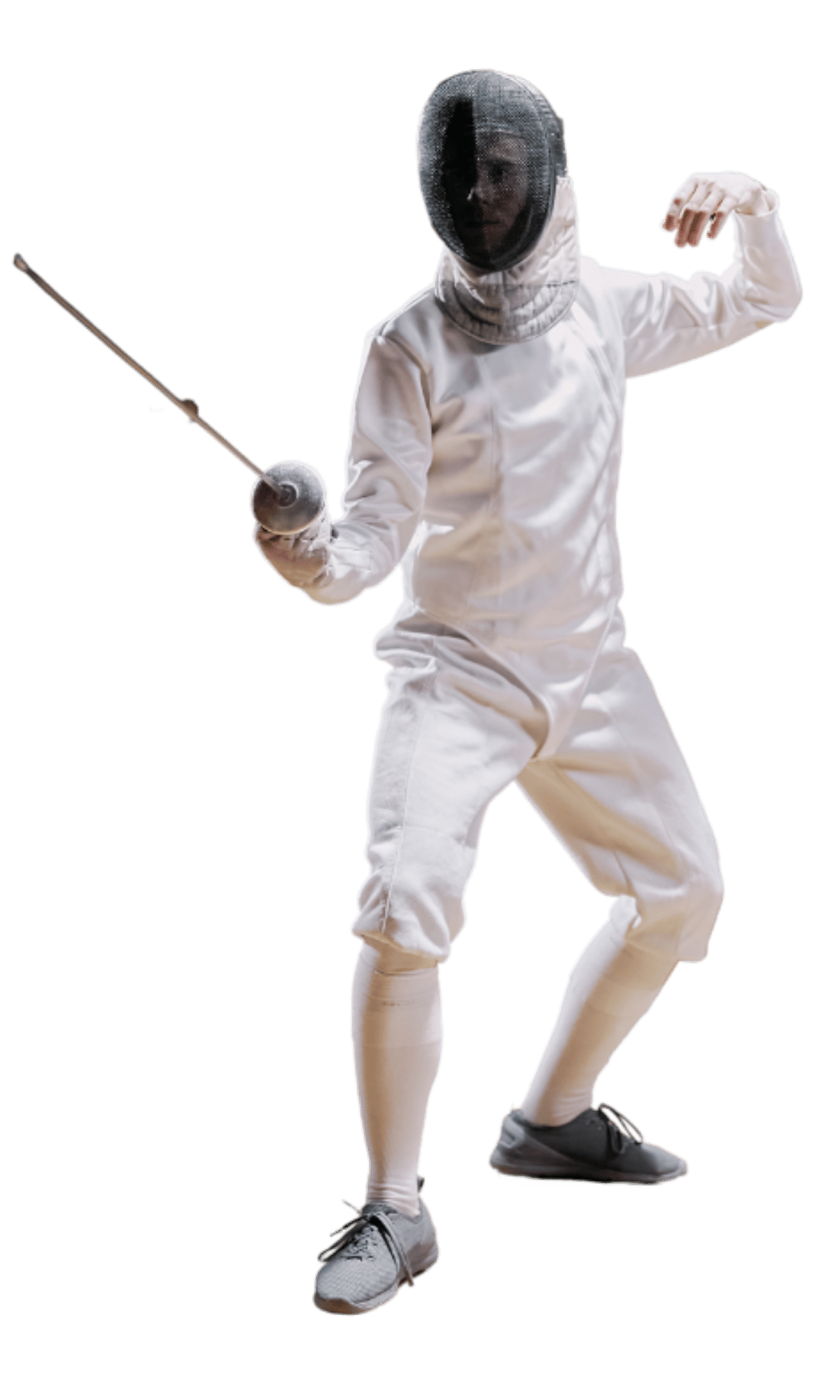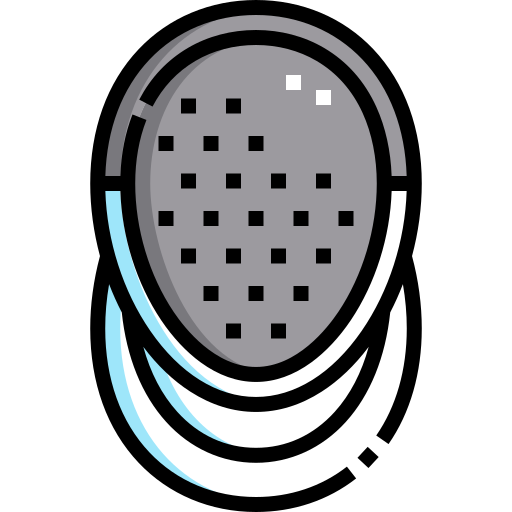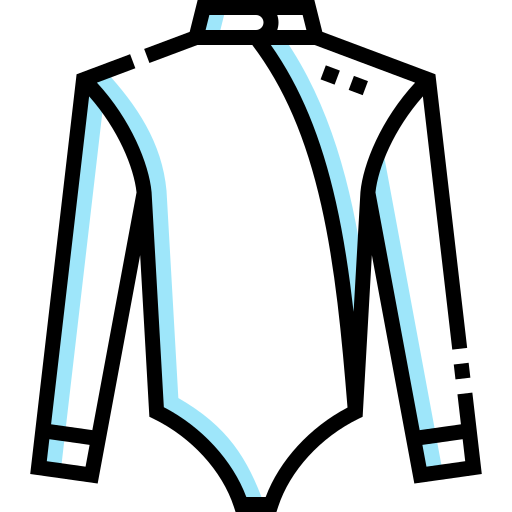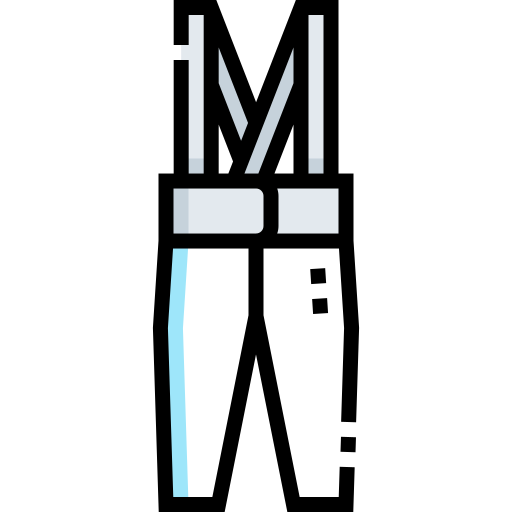Fencing is an ancient art that has evolved from its origins as a combat technique with bladed weapons to become one of the most beautiful, elegant and strategic sports in existence today.
Fencing has deep roots dating back to ancient civilisations. Reliefs dating from 1190 BC have been found in Egypt, depicting fencing assaults.
By the Middle Ages, fencing had become an essential discipline for knights, nobles and soldiers, but it was not until 1896 that fencing became one of the first Olympic sports. This was recognition of its sophistication and profound value as an athletic expression, as this sport represents the quintessence of mental and physical control.
Modern fencing is practised and competed in three disciplines: foil, épée and sabre, each with its own rules, weapons and valid target areas:
Foil: This is a lighter and more versatile point weapon. It originated from the study of the sword. It is a weapon that has ‘conventions’ when it comes to touching, giving priority to the fencer who initiates the attack. It also has a limitation on the target area for scoring hits, which is the torso.
Epee: This is the weapon of duelling, from which its combat technique derives. It is a point-scoring weapon and the valid target area is the entire body. It is not subject to any conventions, and the first to score a hit on the opponent wins the point. It is the most intuitive weapon and therefore the one with the most practitioners nationally and worldwide.
Sabre: A weapon whose technique originated with horsemen. It is used to touch by making cuts with the blade. It is the most physical and dynamic weapon, and is also subject to ‘conventions’, both in terms of attack priority and valid target, which is from the waist up: body, arms and head.
In all weapons, the objective of the combat is the same: to touch the opponent first in the valid areas without being touched in order to score a point. Only in the case of the épée will each of the fencers score a point if they touch at the same time. The fencer who reaches 5 points in the preliminary phase and 15 points in the direct elimination phase wins.
The fencing piste where the bouts or assaults take place measures 14 metres long by 1.5 metres wide. It is a corridor-shaped surface, where the fencers will start in the centre and will be separated by 4 metres, just behind the lines marked as the ‘en garde’ positions.
The court is 14 metres long and 1.5 metres wide. These dimensions mean that players use forward and backward movements rather than sideways movements, although there are specific movements for this, as the surface tends to be narrow. At the back of the court, the pressure increases, the space is reduced and the distances are shortened at the end of the court surface.
They are located 2 metres from the centre of the piste and will place the fencers 4 metres apart each time a touch is contested. This ensures that the initial distance between them is fair, promoting equity.
Located two metres from the end of the piste, they serve as a reference point for both fencers. They inform them that the end of the piste is near and that they could step off it. They must be cautious and precise when the bout takes place in this area.
This is the end line of the piste. If both feet cross this line, a ‘halt’ will be called, and a point will be awarded against the fencer who crossed the line. The fencers will then return to the en garde line to contest a new touch.

To determine who scores the point, the weapons must be connected to a scoring device via a series of cables that run inside the clothing and to the end of the piste. The swords have an electric sensor at the tip which, when pressed against the opponent’s target, causes a light to come on in the device. One fencer will have a red light and the other a green light. If both fencers touch at the same time, both lights will come on at the same time and each will score a point.
When the ‘Go’ signal is given to start the bout, the fencers must move within the legal limits to try to touch their opponent and dodge their opponent’s blows. They will seek to make offensive, defensive and counter-offensive manoeuvres. The fencers will advance or retreat across the piste to press or be pressed and will try to score as many points as possible to win.
The bout must always take place within the fencing piste, with fencers who step out of the side of the piste being penalised by being moved back one metre or even penalised with a point against them if they step out with both feet at the end of the piste. The ends of the piste are marked with 2-metre coloured lines as a warning of the end so that fencers have a visual reference and can try to control the distances.
The moving chess game begins and concentration, coordination, reflexes and mental control skyrocket in a matter of seconds, raising adrenaline to levels you would not believe.
Fencing is a very safe and highly technical sport, thanks to equipment designed to protect the fencer and detect each hit with precision.

Mask
Jacket
Inner bib
Trousers and Knee-High Socks
Glove
Arma Deportiva

Protects the face with a metal mesh that can withstand 1500 Newtons of force. Provides safety, ventilation and visibility
so you can compete in perfect conditions.

Elastic and highly resistant, allowing for agile and fluid movement. Protects the body and arms from the opponent’s blows. They have a double layer on the shooter’s armed arm.

Protection worn under the jacket. Serves as extra safety reinforcement for the arm and side during assaults.

Protection for the lower body. Like the jacket, it is durable and elastic so you can move freely. The trousers are baggy and reach the knee, like tights.

Protects the hand and forearm. With special grip for holding the sword. Padded to reduce impact.

Made of tempered steel so that it is flexible when touched and bends easily. It has a sensor at the tip called a ‘button’ which, when pressed with a certain amount of force, causes the light to turn on when it touches the opponent. It also has protection at hand height, called a ‘cup’, to prevent hits to the hand and forearm.

It is a cable that connects the sword to the scoring device and is worn inside the jacket. It protrudes from the glove at the front and from behind the jacket at hip level.
Succeeding and being successful is hard and extremely competitive. Only highly disciplined and mentally prepared people can have a chance. Nowadays, it is not enough to develop your biceps (anyone can do that).
Extraordinary people seek to develop their discipline and mind to the maximum, as well as to have superior mental agility and know how to make decisions quickly, and in this regard, fencing reigns supreme.
With these skills, it is not surprising that many business leaders, executives and successful people practise fencing and even take their children to do so.
In fencing, you will enjoy constant variety, maximum fun and fierce dynamism in every class.
It’s nothing like lifting weights in a boring traditional gym or experiencing “fake” battles sitting on your sofa playing video games without burning any calories.
Each fencing training session is a complete workout that combines strength, speed, agility, and endurance.
At the end of your class, you will leave feeling like new, completely drained, happy to have gone into battle, and surrounded by good friends ready for those evenings of camaraderie.
The only equipment you need to purchase is a glove and a cable, which you can buy from us. Everything else, including a mask, jacket, trousers, protective gear and sword, can be rented from our facilities. We have all sizes and equipment for both right-handed and left-handed fencers.
Fencing is a completely safe sport. We are one of the sports with the lowest injury rates, and the equipment we use is top quality, so you can feel completely at ease with us.
Not at all! At our club, you will be competing in bouts from day one. Our instructors will supervise your learning and progressively adapt the sessions so that you can advance at your own individual level. You also have the option of requesting private lessons to further develop your fencing skills.
Of course! We offer classes for children aged 5 and up, where we adapt fencing to include psychomotor games, basic skills, movement coordination and an introduction to technique.
They will learn the rules and fencing techniques appropriate for each age group.
Fencing has no age limit! In fact, we are the club with the highest participation and number of medals in veteran competitions, both in Madrid and Spain.
If you still have doubts and would like to have a limited experience to start wielding the sword with us, you have the opportunity to book a free session where you will learn the basics of fencing and have a ‘baptism’ into our sport.
Book your session here and we will contact you to let you know when and how you can do it.
Fill in the form and let us know what query, information or booking you would like to make and for when.